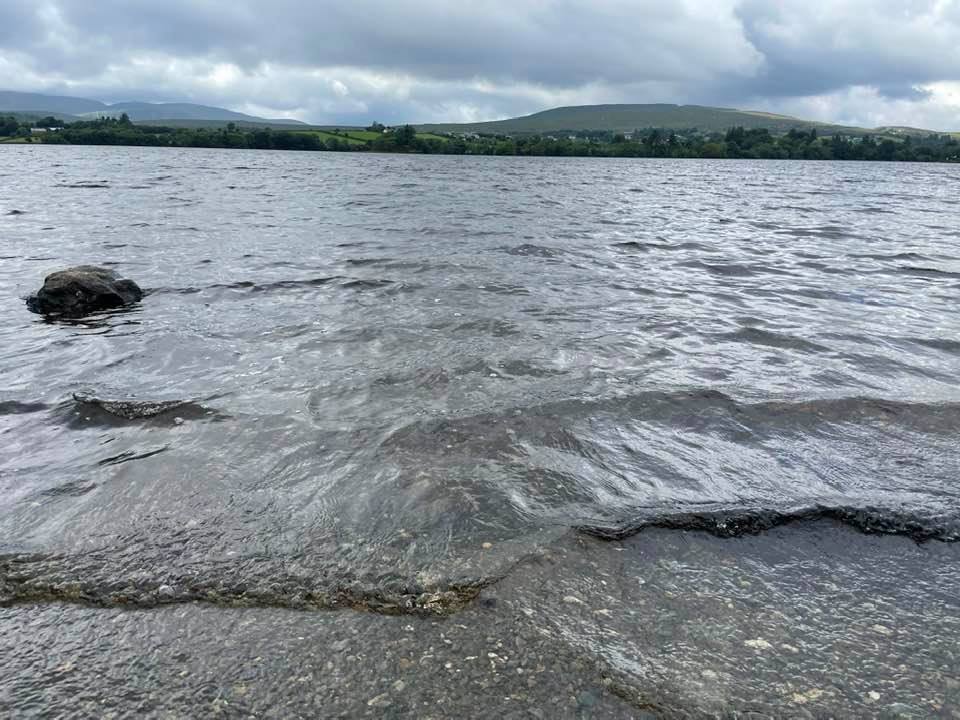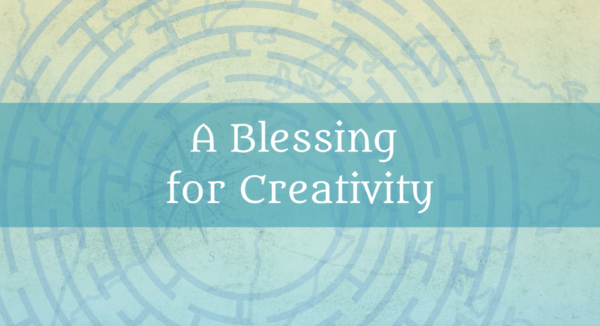Dearest monks, artists, and pilgrims,
Today we enter Holy Week. This week ahead in the Christian scriptures invites us into a world full of betrayal, abandonment, mockery, violence, and ultimately death. The Triduum, those three sacred days which constitute one unfolding liturgy, call us to experience communion, loss, and the border spaces of unknowing. Holy Saturday is an invitation to make a conscious passage through the liminal realm of in-between.
I love the wide space of Holy Saturday that lingers between the suffering and death of Jesus on Friday and the vigil Saturday night proclaiming the return of the Easter fire. For me, Holy Saturday evokes much about the human condition—the ways we are called to let go of things or people, identities or securities and then wonder what will rise up out of the ashes of our lives. The suffering that we experience because of pain or grief or great sorrow and we don’t know if we will ever grasp joy again. Much of our lives rest in that space between loss and hope. Our lives are full of Holy Saturday experiences.
In their book The Last Week: What the Gospels Really Teach About Jesus’s Final Days in Jerusalem, Marcus Borg and John Dominic Crossan write:
“Easter completes the archetypal pattern at the center of the Christian life: death and resurrection, crucifixion and vindication. Both parts of this pattern are essential: death and resurrection, crucifixion and vindication. When one is emphasized over the other distortion is the result. The two must be affirmed equally.”
Before we rush to resurrection we must dwell fully in the space of unknowing, of holding death and life in tension with each other, to experience that liminal place so that we become familiar with its landscape and one day might accompany others who find themselves there and similarly disoriented. The wisdom of the Triduum is that we must be fully present to both the starkness of Friday and to the Saturday space between, before we can really experience the resurrection. We must know the terrible experience of loss wrought again and again in our world so that when the promise of new life dawns we can let it enter into us fully in the space carved by loss. As the great poet of Hafiz reminds us, we must let our loneliness “cut more deep” and “season” us, so that we are reminded of our absolute dependence on the Source of all.
When I first moved to the Pacific Northwest United States in 2003 I fell in love with trails that run along the border spaces between forest and ocean. Walking these paths is like walking along the edges where two wild places meet, and in that space I encounter the wilderness within me. This landscape of earth and sea pressed against each other, wild against wild, speaks to something deep within me—that place where God’s voice often whispers and sometimes roars. It reflects the landscape of my soul in a way that no other place had until I moved to Ireland and found a new landscape of wild edges. I somehow feel very much at home in this place of borders. We often try to domesticate God and to make spirituality about happiness or feeling good. We try and tie things up in neat packages. The spiritual journey is about none of these. It demands something of us and calls us to stand in uncomfortable places while the deserts of our lives strip away ego and power and identity. It calls us to embrace the God of wild borderlands.
Lent, for me, is always about dwelling in the border spaces of my life and recognizing those places and experiences that do not offer me easy answers, those fierce edges of life where things are not as clear-cut as I hope for them to be. There is beauty in the border spaces, those places of ambiguity and mystery. In Esther de Waal’s rich little book To Pause at the Threshold: Reflections on Living on the Border, she writes that the ability to live with uncertainty requires courage and the need to ask questions over finding answers. I am called to hold the space for mystery within me.
In Living on the Border of the Holy: Renewing the Priesthood of All, William Countryman writes that this border country is one we all carry within us. There is a fault line running down the middle of our lives that connects our ordinary reality with its deeper roots. The border country, he argues, is what gives our lives meaning:
“This border country is a place of intense vitality. It does not so much draw us away from the everyday world as it plunges us deeper into a reality of which the everyday world is like the surface . . . To live there for a while is like having the veils pulled away.”
Threshold space opens us up to life that is vital, intense, and filled with unknowns. Borders and edges are the places of transformation, transformation that makes demands of us. Jesus’ journey in the desert was a willingness to dwell in the border space of that landscape and the walk toward Holy Week often fills me with more questions than answers.
Much of our lives are spent in Holy Saturday places but we spend so much energy resisting, longing for resolution and closure. Our practice this day is to really enter into the liminal zone, to be present to it with every cell of our being.
Make some time on Holy Saturday to sit with all of the paradoxes of life. Bring yourself as fully present as you can to the discomfort of the experience. Rest in the space of waiting and unknowing and resist trying to come up with neat answers or resolutions. Imagine yourself on a wild border or standing on a threshold, knowing that you cannot fully embrace what is on the other side until you have let this place shape and form your heart. When you notice your attention drifting or your mind starting to analyze, return to your breath and the present moment. Allow yourself to feel whatever arises in this space. Honor the mystery.
With great and growing love,
Christine
Christine Valters Paintner, PhD, REACE
Image © Christine Valters Paintner



